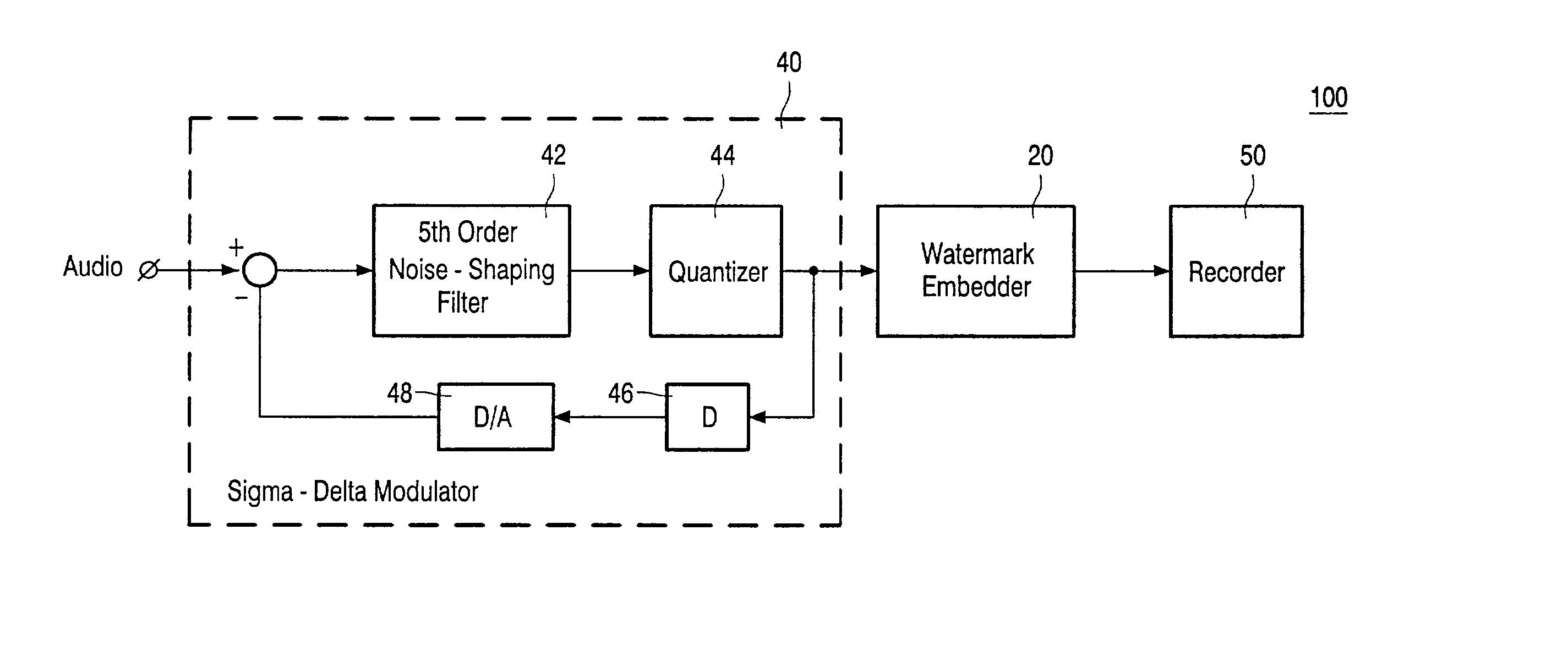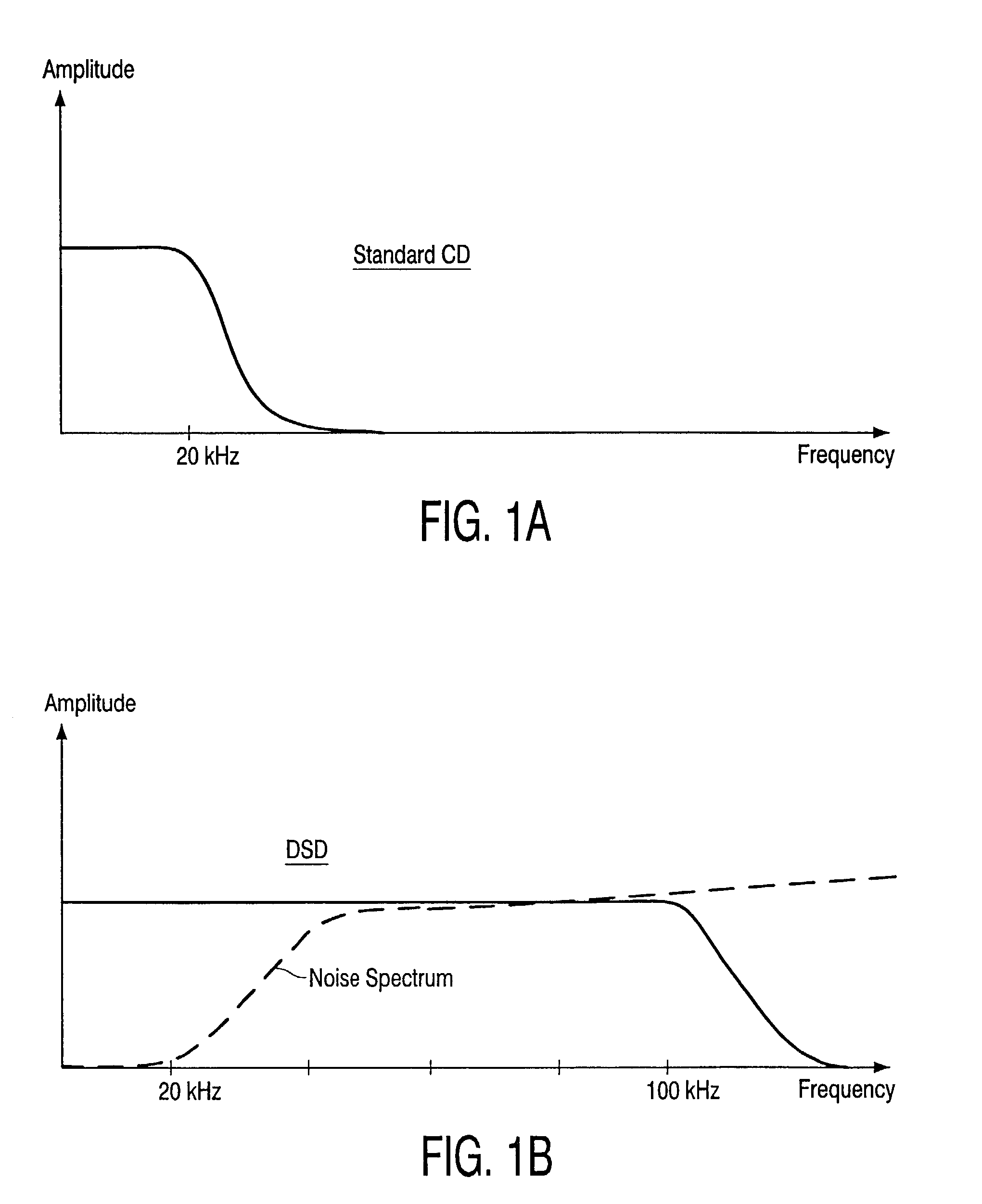Robust watermark for DSD signals
a watermark and digital technology, applied in the field of intellectual property protection, can solve the problems of recording content, recording operation of the device, and insufficient resolution and sampling rate of the standard cd format,
- Summary
- Abstract
- Description
- Claims
- Application Information
AI Technical Summary
Benefits of technology
Problems solved by technology
Method used
Image
Examples
Embodiment Construction
[0032] The present invention provides a watermark, encoded into a specific frequency band of a DSD audio signal, which preferably does not extend below 20 kHz or above 100 kHz. Since the human ear does not normally perceive harmonics above 20 kHz, the digital watermark does not degrade the sound quality of the recording by any significant amount. However, any efforts by individuals to remove this watermark by low-pass filtering the recorded signals above 20 kHz will result in significant degradation, such that the sound quality of the DSD recording will be no better than standard CD recordings.
[0033] FIG. 2A is a block diagram of a DSD signal recording apparatus 100 according to an exemplary embodiment where an analog watermark signal is embedded into an analog audio signal, prior to the encoding of the audio signal into a DSD signal. In the recording apparatus of FIG. 2A, an analog audio signal and an analog watermark signal is input to a watermark embedder 20. The output of the wa...
PUM
| Property | Measurement | Unit |
|---|---|---|
| frequency | aaaaa | aaaaa |
| frequency | aaaaa | aaaaa |
| sampling frequency | aaaaa | aaaaa |
Abstract
Description
Claims
Application Information
 Login to View More
Login to View More - R&D
- Intellectual Property
- Life Sciences
- Materials
- Tech Scout
- Unparalleled Data Quality
- Higher Quality Content
- 60% Fewer Hallucinations
Browse by: Latest US Patents, China's latest patents, Technical Efficacy Thesaurus, Application Domain, Technology Topic, Popular Technical Reports.
© 2025 PatSnap. All rights reserved.Legal|Privacy policy|Modern Slavery Act Transparency Statement|Sitemap|About US| Contact US: help@patsnap.com



